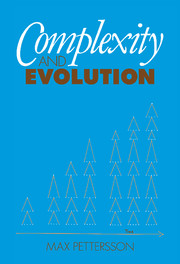Book contents
- Frontmatter
- Contents
- Foreword by Joseph Needham, FRS
- Preface
- Acknowledgements
- 1 Natural and other hierarchies
- 2 Major integrative levels
- 3 Some logarithmic forms of display
- 4 Physical range of integrated natural entities
- 5 Biological range of integrated natural entities (first part)
- 6 Biological range of integrated natural entities (second part)
- 7 Social range of integrated natural entities
- 8 Human societies (first part)
- 9 Human societies (second part)
- 10 Acceleration in evolution
- 11 Further allied accelerations
- 12 Aspects of number
- 13 Aspects of mass
- 14 Positive skewness
- 15 Quantitative conclusions
- Bibliography
- Index
13 - Aspects of mass
Published online by Cambridge University Press: 18 January 2010
- Frontmatter
- Contents
- Foreword by Joseph Needham, FRS
- Preface
- Acknowledgements
- 1 Natural and other hierarchies
- 2 Major integrative levels
- 3 Some logarithmic forms of display
- 4 Physical range of integrated natural entities
- 5 Biological range of integrated natural entities (first part)
- 6 Biological range of integrated natural entities (second part)
- 7 Social range of integrated natural entities
- 8 Human societies (first part)
- 9 Human societies (second part)
- 10 Acceleration in evolution
- 11 Further allied accelerations
- 12 Aspects of number
- 13 Aspects of mass
- 14 Positive skewness
- 15 Quantitative conclusions
- Bibliography
- Index
Summary
Towards the end of Chapter 6 we had a logarithmic diagram (Fig. 6.2) which showed the range of mass of each of the first six kinds of integrated natural entity, i.e. those in the physical range plus those in the biological range. For each level there was an approximate division into main and subsidiary portions of the total range of mass. Now in Fig. 13.1 the same information is repeated but entries have also been made for societies at Levels 7, 8 and 9. Such societies occur only in truly social species, where the adult actively aids the young after hatching or birth. At Level 7 there are the one-mother families, ranging from those of small insects to great whales; and the same range includes all one-kitchen human households, both private and institutional. At Level 8 there are the multifamily domiciliary societies. These also occur among insects and whales, for instance. The mass of the population of some human settlements is very great indeed. Then at Level 9 we have the societies of sovereign states, occurring in Homo sapiens only.
The entry in Fig. 13.1 for the societies of sovereign states uses data from a few years ago, when Iceland was still the nation with the smallest population. China, with the largest population, had at least three thousand times as many people as Iceland. The size of the factor between them does of course determine the length of the entry for societies of sovereign states in Fig. 13.1. This entry happens to be a comparatively short one.
Information
- Type
- Chapter
- Information
- Complexity and Evolution , pp. 116 - 122Publisher: Cambridge University PressPrint publication year: 1996
